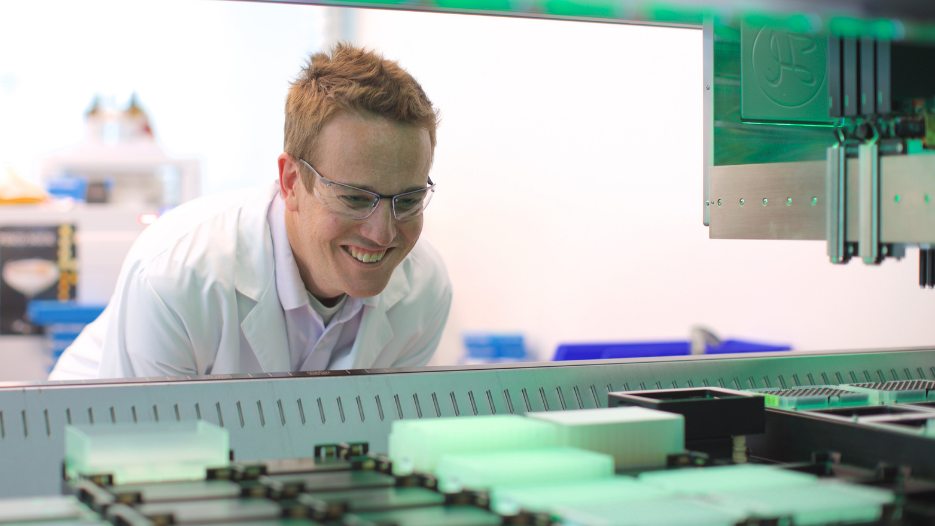Rare Access: Computing and “Letting the Magic Happen”

Our Rare Access interview this month features Darren Platt, President and Chief Information Officer, at Demetrix. Darren enjoys working in two worlds, and also uniting the science and computing teams at Demetrix. Read on to learn more of his insight into the company and how technology is an integral part of operations across the board.
Hi Darren! Please describe your role at Demetrix and what you most enjoy about your work.
As president, I enjoy working with investors and customers to figure out how Demetrix can solve problems. That sounds like a cliché, but in this field, understanding the problem is golden. I am drawn to more quantitative problems, but also just enjoy meeting people.
With my CIO hat, I oversee the software, data IT and automation inside Demetrix. I work with a smart, distributed team that keeps a modern biology lab organized and efficient. The best parts of the job are bringing people together, inside and outside the company to solve problems.
How is computing structured at Demetrix and what does the team typically do?
Modern software tools let us really spread out. We have people in 8 locations and 4 time zones. We need to be organized to pull that off, but it means you can sometimes just go to sleep and wake up to find a problem solved. In terms of roles, we have software developers building tools to run the labs and more data-oriented roles working on scientific data. We have some lab scientists doing software development on the side, and overall, there is not a bright dividing line between the roles. A modern lab might move a million pieces of liquid around per year and we support scientists at every stage from design of the original DNA, to analyzing data sets from large-scale fermentation. Increasing amounts of work are carried out by robots and it’s a fun challenge for our automation team to keep the humans, robots and software all talking.
How do you go about bridging the gap between science and computing within Demetrix?
The biggest factor is curiosity. Software engineers join us who have never set foot in a molecular biology lab. More and more biologists write computer code. The most bio-curious software engineers and software-curious biologists tend to work together to design systems. In pre-covid times, we encouraged developers to spend time in the lab to build connections. We do a semiregular virtual “coffee and science” session on a scientific topic like cloning, presented with a computing audience in mind. Recently, we branched out and did a “programming and science” session to teach computational biology algorithms for software-curious biologists.
What is one piece of advice you would give to someone in the synbio space?
I have experienced the joys and pains of watching many different molecules from early research through to large-scale production.
You should always start by first understanding the end market and customer problems and work backwards. For example, do customers really need a better X? What are they prepared to pay for it? Is production cost in your system even vaguely compatible with that target?
In that spirit, never miss an opportunity to listen to war stories from people further down the pipeline than you. The field advances when experiences at scale drive decisions in the lab. And the field is still young enough that we have a lot to learn.
Essentially, you’re in two different worlds at Demetrix (and this certainly makes for an interesting job!), so how do you ensure everything works together across your departments and the company?
Those worlds are ultimately connected, and data is one of the threads. We hire bright and motivated people and ask them to be independent and remember to communicate well. So mostly the magic just happens. There are still places (fortunately!) where 25 years of experience brings perspective. And I help people mostly to imagine the future: What is the desired end state and how does this decision get you there? How does data help you make that decision?
Technology continues to advance and we have handheld super computers with us 24×7. There are many opportunities to run biotech more efficiently and many of those paths run through computing and through curiosity.






